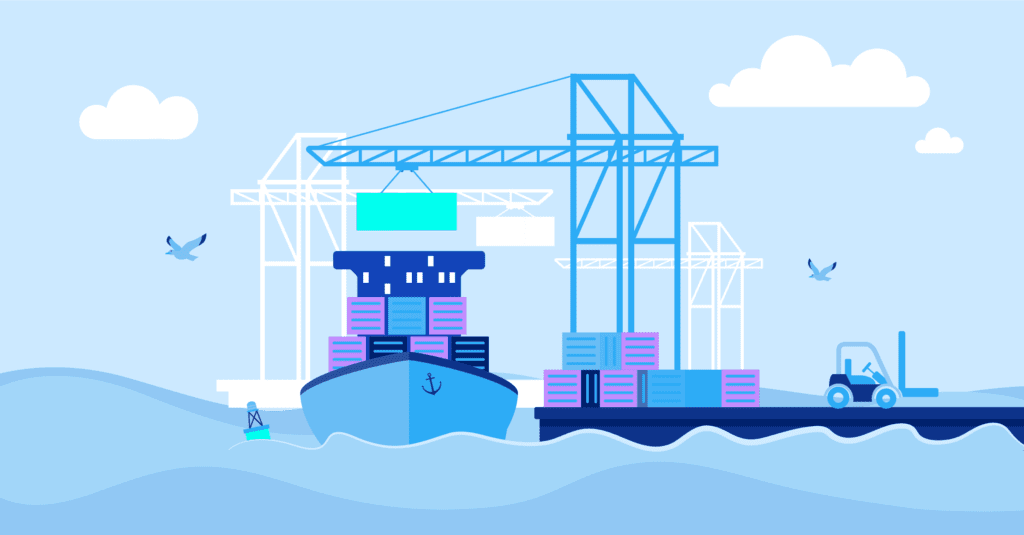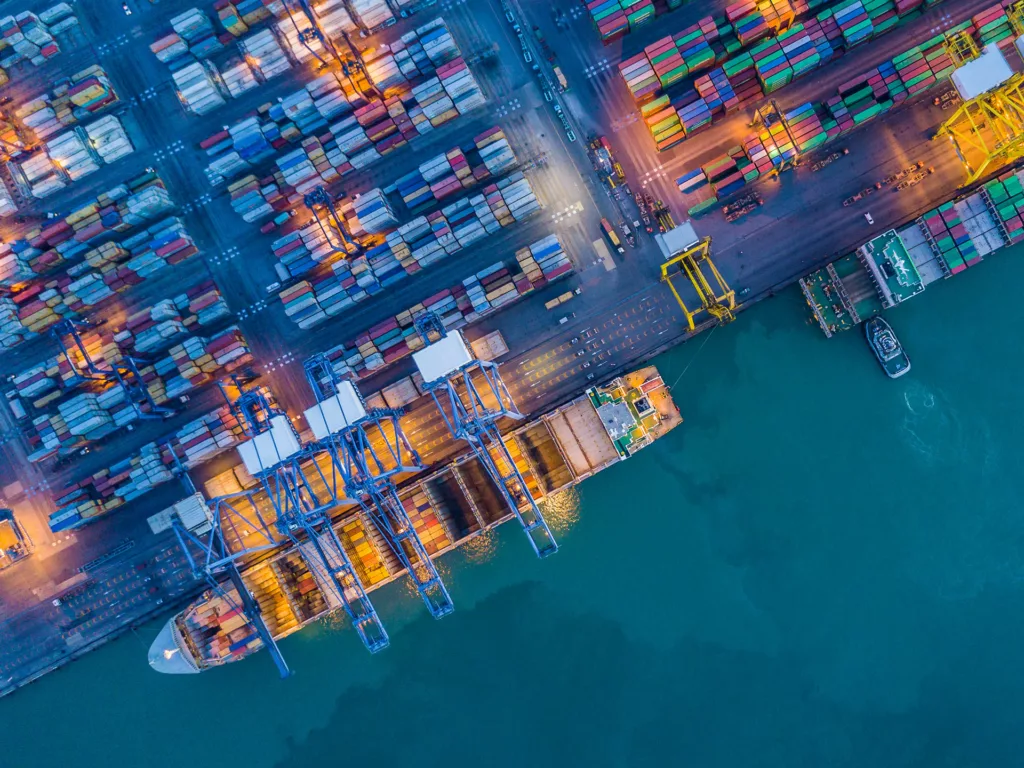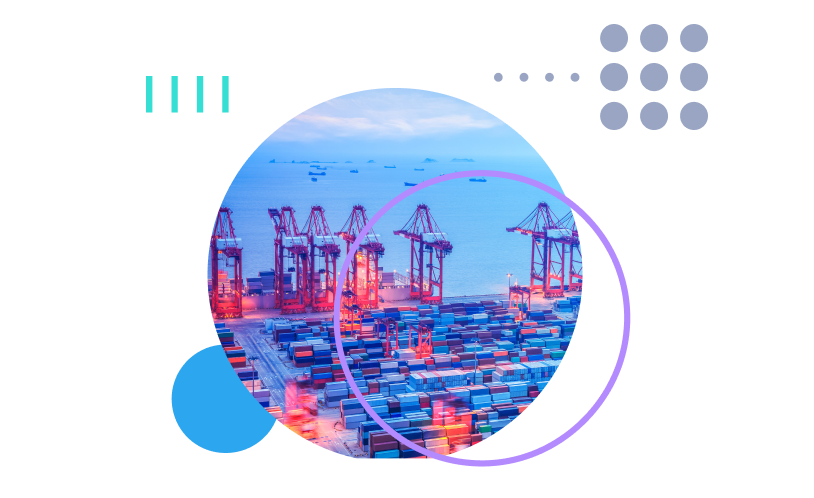Looking for the latest shipping news about the Baltimore bridge collapse? See this article.
USA sea ports: an introduction
Sea ports serve as dynamic gateways that intricately connect the United States to the global economy. These vital hubs play a pivotal role in facilitating trade, commerce, and international relations.
In this blog, we share the top 10 biggest sea ports in the US, exploring the characteristics, features, and unique significance of each.
Looking to ship to a US sea port?
List of top 10 biggest sea ports in the USA
While size might not be everything, when it comes to moving cargo, bigger is definitely better.
1. Port of Los Angeles, California
Known as “America’s Port,” the Port of Los Angeles holds the number one spot as the largest port in North America. Serving as the bustling gateway for 20% of all incoming cargo for the U.S., this maritime giant sprawls across 7,500 acres, boasts 25 cargo terminals, and counts China and Hong Kong, Japan, and South Korea among its major trade partners.
Key metrics:
- Container volume: 10.66 million TEUs
- Annual cargo tonnage: 222 million metric revenue tons
- Leading trading partners: China and Hong Kong, Japan, South Korea
- Total size: 7,500 acres
- Vessels handled: 1,867
- Direct and indirect employment: 1.6 million
2. Port of New Jersey and New York
Taking the prize for the largest port on the East Coast, the Port of New Jersey and New York handles over 7.4 million containers annually. Noteworthy for its diverse cargo, this port is home to the Port Authority Marine Terminal and plays an important role in the region’s economic activity.
Key metrics:
- Container volume: 7.4 million TEUs
- Annual cargo tonnage: 74 million metric revenue tons
- Leading trading partners: China, India, Germany
- Total containers: 4.2 million
- Annual container value: $205 billion

3. Port of Long Beach, California
Nestled alongside Los Angeles, the Port of Long Beach is a major trade gateway. Hardly surprising, since it ranks as the 21st busiest container port globally. Known for its eco-friendly policies, the Port of Long Beach handles a wide variety of cargo types and serves as a vital channel for U.S.-Asian maritime trade.
Key metrics:
- Container volume (2022): 9.13 million TEUs
- Annual cargo tonnage: 78.2 million metric revenue tons
- Total size: 3200 acres
- Cargo berths: 80
- Direct and indirect employment: 370,000
4. Port of Savannah, Georgia
Located in Savannah, Georgia, the Port of Savannah is the largest single-terminal container facility in North America. With particular strength in handling heavy goods such as cars, machinery, and agricultural products, the port plays a pivotal role in trade between the U.S. and countries across Asia, Latin America, and Europe.
Key metrics:
- Container volume (2022): 5.76 million TEUs
- Deepwater terminals: Garden City terminal (1200 acres), Ocean terminal (200 acres)
5. Port of Houston, Texas
As the busiest port by foreign waterborne tonnage, the Port of Houston is the driving force behind economic growth in the Gulf Coast. With an extensive network of terminals, this port manages diverse cargo, with a significant emphasis on petroleum and petroleum products.
Key metrics:
- Vessel calls: 8,200
- Annual cargo tonnage: 247 million metric revenue tons
- Barges: 215,000
- Annual cargo volume: 1.6 million TEUs
- Economic impact on the state: $339 billion

6. Port of Virginia
Strategically positioned along the eastern coast, the Port of Virginia welcomes the world’s largest container vessels. Ranked as the 6th biggest U.S. port, Virginia stands out for its modern infrastructure and efficient cargo handling.
Key metrics:
- Container volume (2022): 3.7 million TEUs
- Economic impact on the state: $92 billion
- Major terminals: 5
- Direct and indirect employment: 397,000
7. The Northwest Seaport Alliance (Seattle-Tacoma)
The merger of the ports of Seattle and Tacoma gave birth to the Northwest Seaport Alliance. This alliance is a crucial trade gateway connecting the US with Asia and is a significant economic contributor to the Pacific Northwest.
Key metrics:
- Container volume: 3.38 million TEUs
- Economic impact: Over 4.3 billion dollars annually
- Cargo volume: Handled over 3.3 million TEUs in 2020, and 3,736,206 TEUs in 2021
Importing or exporting from the US?
8. Port of Charleston, South Carolina
The Port of Charleston is known for its efficient operations and environmental commitment. This southern port supports economic growth and infrastructure development.
Key metrics:
- Container volume (2022): 2.79 million TEUs
- Economic impact: Over $17 billion
- Major terminals: The Hugh K Leatherman Terminal, which opened in 2021
9. Port of Oakland, California
The Port of Oakland plays an important role in trade with Asia. Through ongoing infrastructure projects, it aims to be able to accommodate larger vessels and elevate environmental sustainability.
Key metrics:
- Container volume: 2.34 million TEUs
- Notable: Truck management program for emission reduction
- Cranes: 27 in total
10. Port of Miami, Florida
The Port of Miami stands as a versatile hub, adeptly handling a diverse range of cargo and proudly holding the title of the world’s largest cruise port. Recent transformative infrastructure projects, such as the Deep Dredge Project, have enhanced its capabilities and connectivity and ushered in a new era of maritime excellence.
Key metrics:
- Container volume (2022): 1.2 million TEUs
- Notable: Deep Dredge Project for accommodating larger ships
- Revenue: More than $41 billion annually

The significance of the busiest sea ports in the US
The bustling activity at sea ports serves as the lifeblood of global commerce, with significant implications for both national economies and international trade networks. Let’s delve into the pivotal role played by the busiest sea ports and their impact on the maritime landscape.
- International trade nexus: Functioning as crucial links between continents, these ports facilitate the smooth flow of goods worldwide, playing a key role in shaping the scale and intensity of international trade.
- Technological advancements: The busiest sea ports often spearhead technological progress, harnessing automation and innovation to enhance efficiency. Logistics systems are implemented to streamline operations, reducing vessel turnaround times and optimizing cargo handling.
- Strategic geographical significance: Situated in strategic geographical locations, these ports are crucial points in global trade routes, wielding considerable influence over trade dynamics.
- Infrastructure investments: Ongoing investments in infrastructure, such as expanding container terminals and developing deepwater facilities, are common trends among the busiest ports, ensuring continuous growth and adaptability.
Why are sea ports important in the USA?
Sea ports in the United States stand as indispensable pillars woven into the fabric of the nation’s economic development and global connectivity. Their significance is multifaceted, serving as:
- Economic powerhouses: Ports act as primary conduits for the import and export of goods. This helps foster a robust trade ecosystem that significantly contributes to the nation’s GDP.
- Logistical backbone: Forming the logistical backbone of the USA’s supply chain, sea ports ensure the seamless movement of goods between domestic and international destinations.
- Industrial and commercial hubs: Ports often evolve into vibrant commercial centers, hosting trading hubs, warehousing facilities, and business districts that amplify economic activities.
- Strategic national security assets: Ports play a critical role in the nation’s security architecture, providing secure and monitored entry points for goods while enabling effective customs and border protection measures.
In essence, sea ports not only drive economic prosperity but also play a pivotal role in shaping the nation’s logistics, commerce, and national security landscape.
Make your shipping seamless with Freightos
Understanding the distinctive features and capabilities of the largest US ports is essential for businesses involved in international trade. Each US port plays a unique role in shaping regional economies, propelling commerce, and enhancing global connectivity.
To streamline your shipping experience and optimize costs when shipping by sea, try the Freightos.com marketplace. No matter your port of origin or destination, you can effortlessly compare quotes from multiple freight forwarders, book shipments, and oversee the entire shipping process all in one place.



